With the rapid development and maturity of wireless communication and information sensing technology, the connection of items into the Internet of Things through information sensing equipment and networks has become a service aimed at the automatic identification, positioning, tracking, monitoring and management of items may. The application of the Internet of Things technology in the national economy is becoming more and more extensive. In recent years, it has attracted extensive attention from the academic and industrial circles. It has become a global hot issue. Many countries have raised the development of the Internet of Things to a national strategic level. This article proposes a GSM wireless network-based application design that combines the user's mobile phone and car air conditioner into a small Internet of Things based on the GSM wireless network. The air conditioners in modern cars are generally controlled manually. The air conditioners can only be turned on or off when the driver enters the cab. This makes people feel that the air conditioners are not turned on when entering the car in hot summer or cold winter. When it is abnormally hot or cold, we design and manufacture a device that can monitor the temperature in the car and perform remote control in advance to turn on the air conditioning system in the car according to the monitored temperature. It is mentioned on the agenda of people ’s daily life. This design is Proposed to meet this requirement.
1 System composition and working principle The system is composed of two parts, one part is the temperature collection and relay control part centered on the STC89C52RC microcontroller, and the other part is the remote transmission part of the data composed of the GSM mobile communication network, TC35I and the user's mobile . The block diagram of the system is shown in Figure 1.
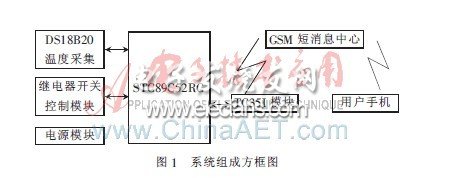
The working principle of the system is: the user sends a temperature query instruction through the mobile phone, and the instruction is sent to the TC35I installed in the car through the GSM short message service center in the form of a short message. After the module receives the instruction, it transmits the instruction to the STC89C52RC microcontroller through the serial port. The single-chip computer starts DS18B20 to collect the temperature information in the car, and then transmits the collected temperature information to the user's mobile phone through the GSM short message service center through the single-chip computer and TC35I. If the temperature in the car is too high or too low, the user can control the car through instructions Internal relay switch to turn on the air conditioner in the car to achieve the effect of cooling or heating.
2 System hardware design The hardware design part of the system includes a microcontroller module, a DS18B20 temperature acquisition module, a relay switch control module, a power supply module and a TC35I module.
2.1 Microcontroller module The microcontroller module mainly completes temperature collection, relay switch control and serial communication with TC35I. Taking into account factors such as the drive capability, power consumption, and cost performance of the module, the system uses the STC89C52RC chip from Acer, which has the advantages of low power consumption, strong control and anti-interference capabilities, and high cost performance. The microcontroller has 8 KB of Flash ROM memory, 512 B of RAM and 2 KB of EEPROM memory. It also integrates a watchdog circuit and UART. It has the functions of in-system programming and in-application programming without the need for a special emulator and Programmer, so choosing this controller can bring great convenience to the design of the system.
2.2 The temperature acquisition module in the temperature acquisition module system adopts the high-precision and high-reliability DS18B20 temperature sensor produced by DALLAS. It has the characteristics of small size, low hardware overhead, strong anti-interference ability and high accuracy. It uses single bus data communication , Full digital temperature conversion and output, maximum 12-bit resolution, accuracy up to ± 0.5 ℃, detection temperature range is -55 ℃ ~ + 125 ℃, so it can meet the design requirements of this system. The connection circuit between DS18B20 and the microcontroller is shown in Figure 2.
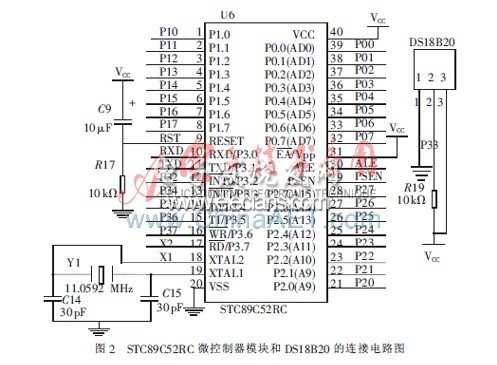
2.3 Relay switch control module The relay switch module is composed of TLP521-4, ULN2803, SRD-12VDC and triode. The signal output by the microcontroller is sent to the TLP521-4 optocoupler chip through the switch circuit composed of triode and then passes through the ULN2803 Darlington After the amplification is used to drive the SRD-12DC relay, and then to achieve the role of various switches to control the air conditioner, the circuit diagram of the relay switch control module and the microcontroller is shown in Figure 3.
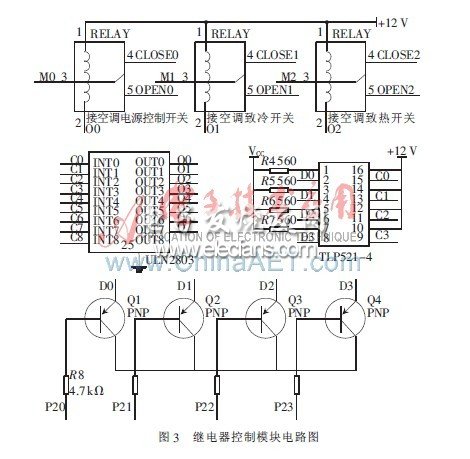
2.4 TC35I module TC35I module is a dual-band 900/1800 MHz highly integrated GSM module launched by Simens. Its compact design and low power consumption can provide a cost-effective solution for many communication applications. It supports EGS900 and GSM1800 dual frequency, the content of data transmission supports voice, data, short message and fax services, the communication interface uses RS232 (bidirectional transmission of commands and data), the power supply uses a single power supply 3.3 V ~ 5.5 V voltage, applicable The scope includes: low-power communication devices for portable computers, telemetry and remote sensing, telematics and communications and other industrial fields. The circuit connection diagram of TC35I and microcontroller in this system is shown in Figure 4.
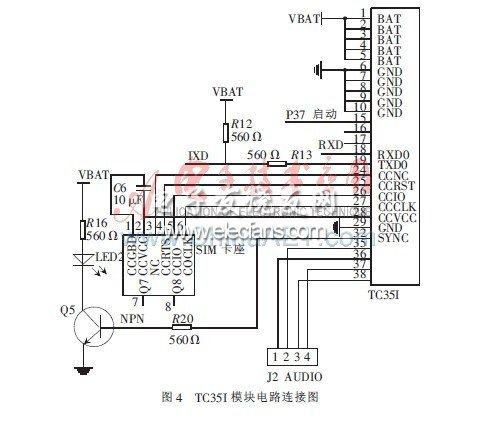
Lithium batteries are primary batteries that have lithium as an anode,mainly including lithium-metal batteries,lithium-ion batteries and li-polymer batteries.however,the lithium-ion batteries and li-polymer batteries which have widespread application in every field of life has solved many problems for human beings ,firstly,as commonly used lithium battery ,li-ion battery has some advantage as :
1.The energy ratio is higher. With high storage energy density, it has reached 460-600wh /kg, about 6-7 times that of lead-acid batteries.
2.The working life is longer, it can reach more than 6 years, and the battery with lithium ferrous phosphate as the positive electrode and charged with 1C DOD has a record of using it 10,000 times.
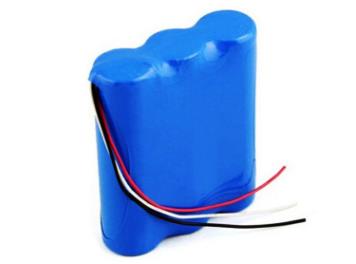
Secondly ,the advantage for li-polymer batteries as :
1.No battery leakage problem, the battery does not contain liquid electrolyte since it uses colloidal solid
2.The battery can be designed in many shapes
3.It will have twice the capacity of a lithium-ion battery of the same size
Lithium Battery,Lithium Battery Pack,Rechargeable Polymer Lithium Battery,Lithium Ion Battery 12V
YFJ TECHNOLOGY (HK) CO.,LIMITED , http://www.yfjpower.com